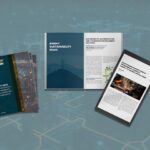Problem Solved: Wound Coil Manufacturability Issues
By Steven R. Kubes, Sr. Product Manager, 10G and PlanarMag Product Technology, TE Connectivity
Typical hand-wound coils meet existing performance goals by as much as a 2/3-design and 1/3-art process. Predictability is very difficult because of the human element involved in hand winding. As the frequencies increase, the design aspects become less and less predictable. As a result, the art aspect, the number of iterations performed until matching is achieved, will increase.
With automation, predictably increases, since all elements of the process are monitored and targeted for continual improvement. However, automation can be used only at lower frequencies. As frequencies increase, the size of the toroid decreases, and it gets more difficult for machines to handle the initial step of threading the needle.
For hand-wound coils, the ability to predict performance and yield becomes increasingly difficult, especially at frequencies of 10G or higher. The continued use of hand-wound coils at higher frequencies will mean more errors, more production rejects, lower yields, and, consequently, higher prices. In addition, the amount of labor content will increase as well — further increasing costs.
Today, magnetic windings are predominantly manufactured by hand in factories in China. While about 100,000 people wind these coils, manufacturing consistency varies, depending on the expertise of the workers, and turnover can be as high as 50%. When downturns and the resulting layoffs occur, even experienced workers can be eliminated. When the market improves, it can take several months to train and develop the new workforce and reestablish supply continuity. This workforce situation has lead to extensive product supply shortages and quality issues. As a result, the data communications industry is not looking for a solution to the wound-coil problem, it’s looking for a replacement for wound coils.







